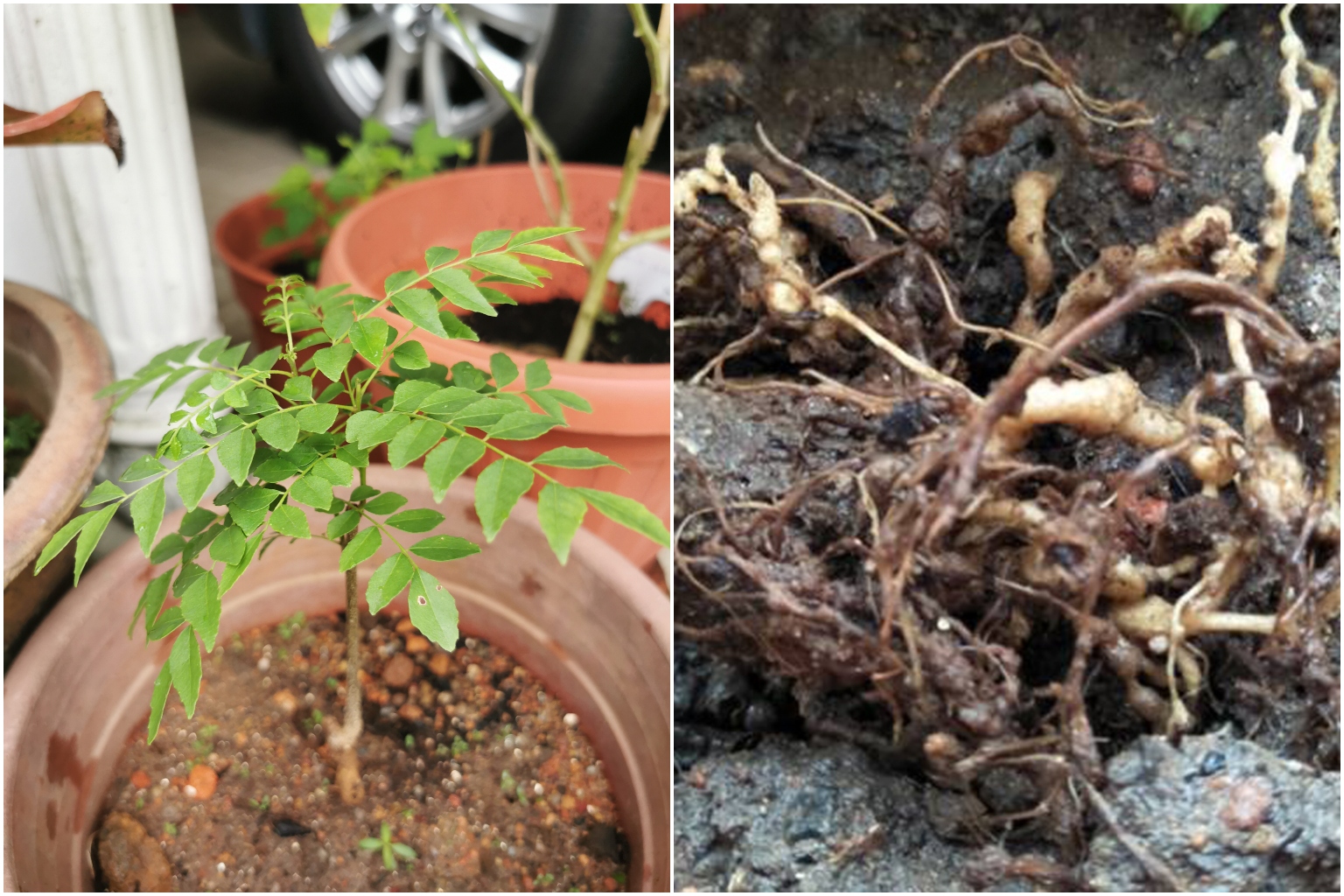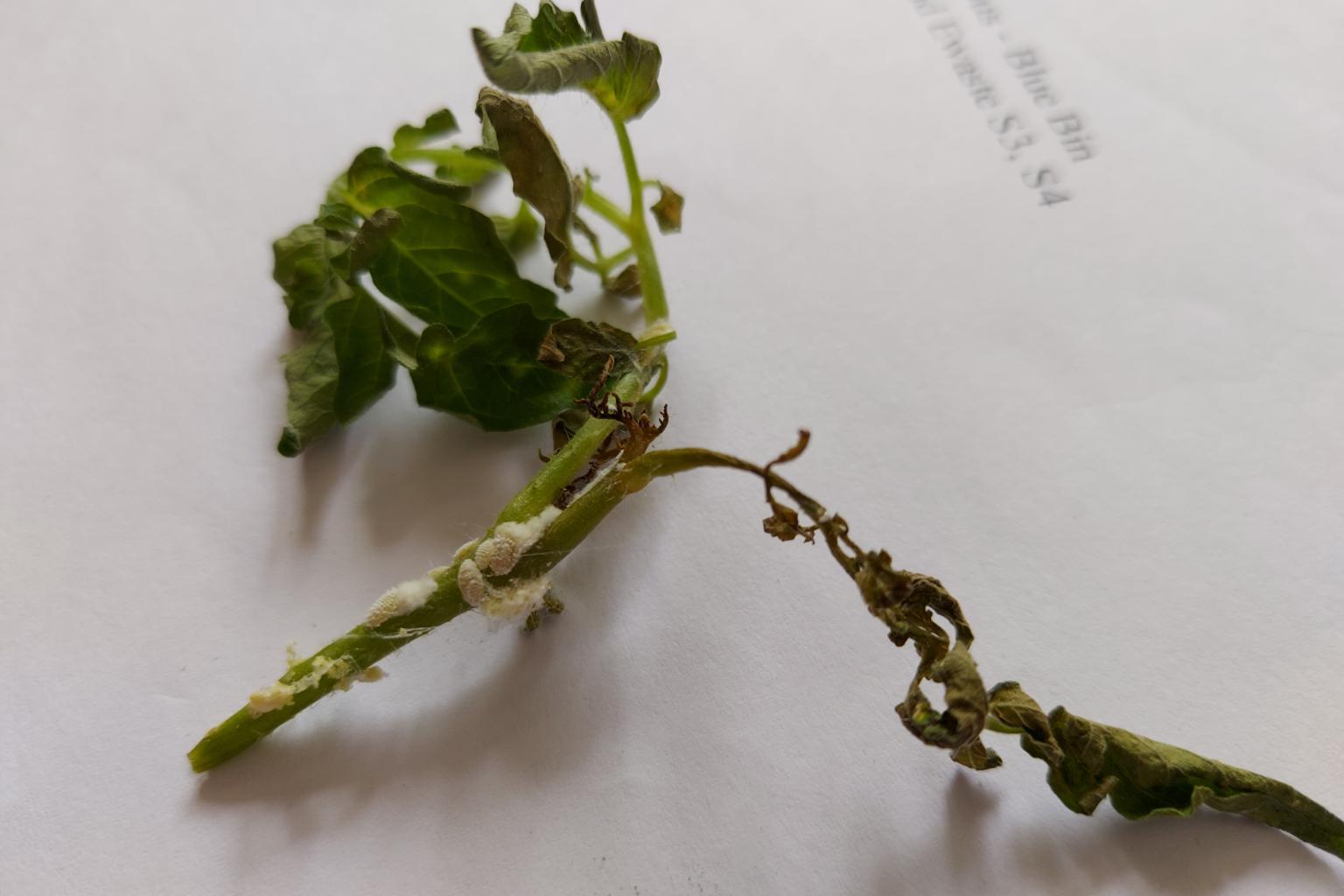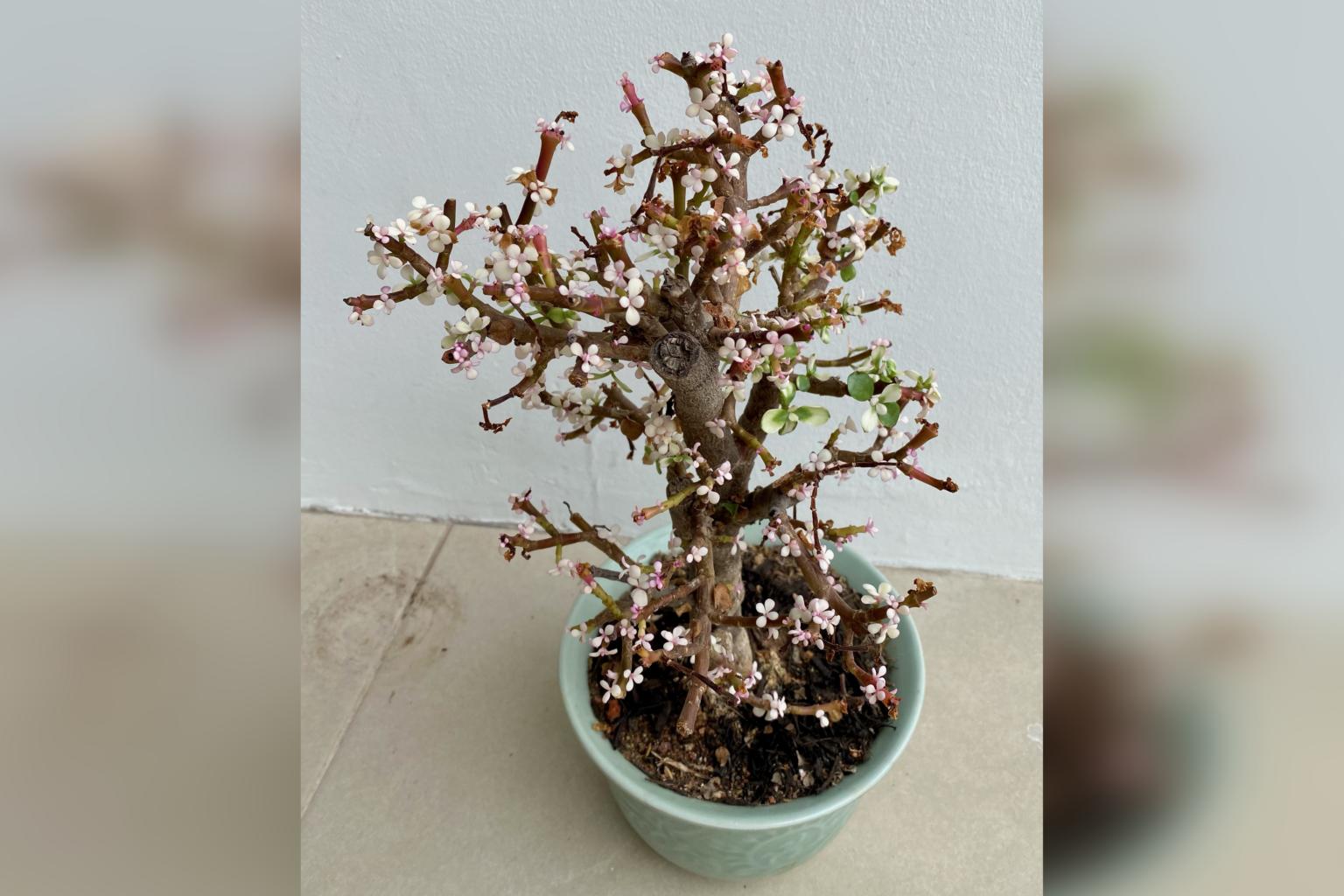Root Awakening: Mealy bug infestation; propagating roses
Sign up now: Get ST's newsletters delivered to your inbox

A curry tree plant (left) and infested chilli plant.
PHOTOS: TONY SEET, LIU BENG GUEK
Follow topic:
This plant used to grow in the ground, but I have since moved it into a pot. What kind of plant is it? How tall will it grow to and does it flower?
Tony Seet
The plant looks like the curry tree (Murraya koenigii). Its aromatic leaves are used to flavour curries.
This plant grows at a moderate rate and, with time, it can become a small tree of about 3m in height. It flowers and produces clusters of scented, white flowers which lead to the production of spherical fruit. The fruit is eaten by birds which help to disperse the seeds.
Your plant could have grown from a seed dispersed this way.
This is the root of one of my chilli plants. A few of my plants have very little roots. Besides nodes on the roots, the plants' leaves are also drying up. Why is this happening?
Liu Beng Guek
Your chilli plant is probably infested with root knot nematodes - microscopic pests that reside in the roots of susceptible plants and which weaken them with time.
They can be difficult to eradicate once they gain a foothold on your plant.
A soil-drench using abamectin is a well-known method to manage root knot nematode infestation of susceptible plant species. Read the information on the label of the pesticide and adhere to the dosage, safety precautions and withholding period prescribed by the manufacturer.

I have been growing potted cherry tomatoes on the second-floor veranda. However, many plants have been wilting. I have discovered a white, furry and webbed deposit on some plants. This appears to contain tiny larvae, but I cannot be sure. What do you advise?
Frankie Meehan
Your tomato plant is infested with mealy bugs. They are sucking insects that extract sap from the plant and, in large numbers, they can weaken the plant substantially.
Low-toxicity and organic remedies include spraying plants with summer oil, neem oil or a castile soap solution, which work by suffocating the pests. Hence, good coverage of the plant and repeated sprays are required to keep the pest population low.
The use of such organic pesticides will not harm beneficial fauna that can assist in pest control in your garden.
Inspecting your plants regularly and being prompt in treating such infestations are key to growing pest-free plants in the garden. For small infestations, a strong jet of water is usually sufficient to wash off the mealy bugs.

I bought a plant during Chinese New Year and placed it indoors. The green leaves started to shed rapidly. So I watered it more frequently and left it outdoors and green leaves started to sprout again. I bought a second plant and it is doing quite well - I mist the leaves and potting mix. However, the green leaves started to shed more than the pink ones. How do I care for the plant so that there are more green leaves to balance the pink ones?
Richard B.Y. Khoo
The plant is botanically known as Portulacaria afra and its common name is the Elephant Bush. It is a sun-loving succulent that needs to be grown under direct sunlight for best results. Indoor conditions are not bright enough to support the growth of this plant.
Use well-draining media, such as one incorporated with pumice or lava sand. Water the plant when the growing media dries out. You may also need to offer rain protection by erecting a clear shelter above the plant during the rainy season.

There are roses growing in my garden. How do I propagate them? I tried the stem cutting method, but was unsuccessful.
Robin Lim
Propagation of roses can be done by stem-cuttings. Take 15cm-long softwood stem cuttings and root them. You may need to cover the cuttings with a clear plastic bag with some small holes to prevent the build-up of excessive moisture and heat.
Place cuttings in well-draining media and in a bright and cool location.
However, not all roses root easily from stem-cuttings. For such species, it is best to propagate them via grafting. It takes skill to perfect the grafting technique and you will also need to select an appropriate robust rootstock that is suited for Singapore's tropical climate.
Answers by Dr Wilson Wong, an NParks- certified practising horticulturist, parks manager and ISA-certified arborist. He is the founder of Green Culture Singapore and an adjunct assistant professor (Food Science & Technology) at the National University of Singapore.
Have a gardening query? E-mail it with clear, high-resolution pictures of at least 1MB, if any, and your full name to stlife@sph.com.sg. We reserve the right to edit and reject questions.

